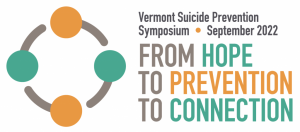Facilitator

Kurt Michael, BA, MS, PhD
Director
Vermont Leadership Education in Neurodevelopmental Disabilities
(VT LEND)
Description
According to recent national data from the Youth Risk Behavior Survey (YRBS), almost 32% of high school teens experienced “persistent feelings of sadness or hopelessness,” and 17% reported having “serious suicidal thoughts” during the previous 12 months.
Though only a small percentage of teens reported making a suicide attempt requiring medical intervention during the previous year (2.4%), undetected or untreated sadness, hopelessness, and suicidal thoughts can fester. Worse, when suicidal thoughts are experienced in a context where there is ready access to lethal means (e.g., dangerous medications, firearms), it can be a deadly combination. Thus, identifying and treating the more prevalent correlates of suicidality at an earlier stage is a sensible entry point for prevention efforts versus waiting until youth experience much more serious emotional and behavioral crises.
Two specific suicide prevention models relevant for youth in schools, Counseling on Access to Lethal Means (CALM) and Collaborative Assessment and Management of Suicidality (CAMS) will be reviewed during the presentation. The workshop is designed to inform clinicians on the feasibility, acceptability, and effectiveness of CALM and CAMS with children and adolescents, especially in the context of K-12 schools.
Learning Objectives
Upon completion of this program, participants should be better able to:
- summarize the epidemiology of suicide, including recent changes in rates;
- identify and access feasible resources and techniques related to suicide prevention grounded in science;
- identify the four key reasons that lethal “means matter”; and
- summarize the key features of the CALM and CAMS programs and their practical implications for preventing suicide death among children and adolescents.

